Santiago de Cuba Travel Guide
The original capital of Cuba, Santiago was founded in 1514 and is today the centre of the province of Santiago de Cuba in the southeast of the island, 485 miles (780km) from the present capital city of Havana. One of the most picturesque cities in Cuba, it's notoriously hilly with sloping streets, nestled between the coast and the Sierra Maestra mountain range.
Santiago boasts a number of monuments and museums associated with Cuba's long struggle for national independence. The city also claims the oldest home in the Americas: Casa de Diego Velazquez, the residence of the Spanish governor of old, which is a highlight of the city's historic quarter. Santiago is a diverse city, with many population groups, often in quite distinct neighbourhoods, including the French-Haitian district of Tivoli.
The city is known for its annual carnival, both bigger and more riotous than Havana's. It's also blessed with closely situated natural wonders, including the 80,000 hectare (197,684 acre) Baconao Park, which begins in the city and ends in the lagoon of the same name.
Things to do in Santiago de Cuba
There is a wonderful variety of things to see and do in Santiago de Cuba, but it's particularly exciting for history buffs, especially those interested in its military and revolutionary past. The Castillo de San Pedro Del Morro (Morro Castle) is an astounding ancient fortress; it is difficult not to imagine battles with fearsome pirates when strolling along the battlements.
There are other worthwhile historical attractions in Santiago, such as the famous Moncada Barracks where Castro's revolution officially began, Santiago's Plaza de la Revolucion and its impressive monuments, and the Santa Ifigenia Cemetery, which houses the graves of many important Cuban figures such as Jose Martí, Fidel Castro and Carlos Manuel de Cespedes.
There are also a number of museums worth visiting in Santiago. The Diego Velazquez Museum, possibly the oldest house in Cuba, gives remarkable insight into colonial domestic life and the history of the city; and the Bacardi Museum offers a glimpse into the private collection of one of the most famous families of Santiago. The imposing Metropolitan Cathedral in the centre of town is also definitely worth exploring.
The cultural and historical attractions of Santiago are matched by the natural surroundings of the city, drawing tourists from far and wide. The vast Baconao Park has plenty of natural splendour as well as many historical and cultural sites. Travellers making an excursion a little further afield will come across the Parque Nacional Alejandro de Humboldt, an awe-inspiring wilderness and UNESCO World Heritage Site widely hailed as the most valuable and biodiverse park in the Caribbean.
Santiago de Cuba is a treasure trove for tourists and the fact that it is still slightly less crowded and commercial than Havana adds to its charm.
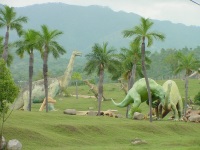
Baconao Park
Baconao Park is a World Heritage Biosphere Reserve that boasts teeming wildlife refuges, coffee plantations and history exhibits. The park features varied attractions, from life-size dinosaur models lurking in the lush vegetation to a museum dedicated to the 26th of July Movement, which is regarded as the beginning of the Cuban Revolution and occurred right here in the region. Climbing the 459 steps to the summit of La Gran Piedra some 4,049ft (1,234m) above sea level may even afford travellers the chance to see the twinkling lights of Jamaica on a clear night sky. The Jardin Ave de Paraiso is a magnificent 45 hectare (111-acre) garden dating from 1860. The park also contains an aquarium and a car museum.
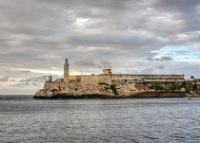
Castillo de San Pedro del Morro (Morro Castle)
Santiago's most impressive structure is poised ominously atop the cliffs at the narrow entrance to Santiago Bay. This enormous piece of military architecture, a maze of stairways and dungeons, was begun in 1640 and originally built to defend the bay from pirates and naval attack. It now houses the Museum of Piracy, featuring fascinating displays on piracy, colonialism and slavery, as well as old blunderbusses, muskets, cutlasses and Toledo blades in glass cases. The castle is one of the best-preserved 17th-century Spanish fortresses in the world and it has been declared a UNESCO World Heritage Site.
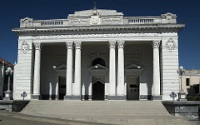
Emilio Bacardi Moreau Museum
The world's largest family-owned spirits company, Bacardi started producing rum in Santiago way back in 1862. Forced to flee the country after the Cuban Revolution in 1959, Bacardi drinks aren't found in Cuba today, but the brand still strongly associates itself with the country. The Emilio Bacardi Moreau Museum houses the patriarch's private art and antique collections, serving not as a rum museum but as an insight into the life of the famous family's historical artefacts. While there aren't distillery tours, the original factory still stands in Santiago where no doubt the fruit bats that inspired the world-famous Bacardi logo still nest in its rafters.
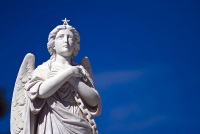
Santa Ifigenia Cemetery
Santa Ifigenia Cemetery was founded in 1868 and declared a National Monument in 1937, now sheltering a number of important historical and cultural figures including war heroes and famous politicians and artists. The gateway is dominated by a memorial to Cuban soldiers who died fighting in Angola. The visitor is then led to the impressive tomb of Cuban national hero José Martí, the six sides of its tower each representing one of Cuba's original provinces. The round mausoleum is designed so that the sun will always shine on Marti's casket, which is draped with the Cuban flag. The cemetery also contains a shrine to the Virgin of Charity, Cuba's patron saint, in the form of the Basilica del Cobre.
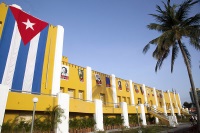
Moncada Barracks
The bullet-ridden Moncada Barracks and adjacent Parque Historico Abel Santamaria were the settings for the most important events in Cuba's revolutionary history. In 1953, a group led by Fidel Castro attacked the barracks in an attempt to launch the revolution, but the plan failed and many were captured, tortured or killed by Batista's army. Castro himself was later tried in the Escuela de Enfermeras for leading the attack, and this is when he wrote his famous 'History Will Absolve Me' speech. This botched attack is widely considered to mark the beginning of the Cuban Revolution and the date of the attack, 26 July, was adopted by Castro as the name for the revolutionary movement that overthrew Batista's dictatorship in 1959.
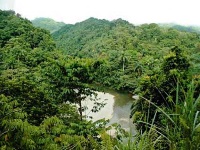
Parque Nacional Alejandro de Humboldt
This UNESCO World Heritage Site is located in the Cuban provinces of Holguín and Guantánamo, and features impressive flora and fauna, such as parrots, lizards and hummingbirds unique to the area. The amount of endemic species in the park has made it one of the most valuable areas in the world for research and conservation. Its extreme humidity and incredibly varied topography are what make it so hospitable to the magnificent diversity of species. It's widely hailed as the most important nature reserve in the Caribbean, remaining unspoilt by human settlement. A guide is compulsory when touring the reserve, and tourists find it hard to resist its pristine waterfalls and stunning natural rock pools.
Santiago de Cuba Climate and Weather
Cuba has a tropical, temperate climate and experiences two distinct seasons: a rainy season from May to October, and a dry season from November to April. Generally the weather in Cuba is sunny, hot and humid. Santiago de Cuba's climate is fairly representative of the rest of Cuba, although it is situated in the most humid area of the country. Average daytime temperatures in Santiago range from 84F (29C) in January to 100F (38C) in August. From May through August, high humidity can make the heat uncomfortable. Rainy weather can occur in any season in Santiago but in the cooler winter months around December there are only light showers. The rainy season includes a hurricane season from July to November, and Santiago suffers quite badly from these tropical storms as it is on the south coast. September and October are the months most likely to experience serious tropical storms.
Ultimately, Santiago de Cuba's climate is hot all year round with pleasant, sunny weather prevailing. The dry season is the best time of year to visit Santiago, with December and January being the most popular months, but a number of people brave the summer heat to enjoy the Santiago Carnival in July.
Cuba travel info
Electricity
Most older hotels use 110 volt power, 60Hz, while newer hotels use 220 volts, 60Hz. A variety of outlets are in use, but the flat and round two-pin plugs are most common.
Language
The official language is Spanish, but English is spoken in the main tourist spots.
Money
The official currency is the Cuban Peso (CUP), which divided into 100 centavos. The Peso Convertible (CUC) functioned as a 'tourist' currency but was removed from circulation in January 2021 as part of the Cuban government's currency reform. The Cuban National Peso is the only legal cash currency in Cuba, though private hotels, bars and restaurants usually accept cash payments in dollars or euros. Sterling is not widely accepted.
Visa and MasterCard are generally accepted only in major cities and hotels as long as they haven't been issued by a US bank; Diners Club has limited acceptance, and American Express is not accepted anywhere on the island. No US-issued credit or debit cards will work in ATMs, but those holding cards issued in other countries should be able to get pesos at most major tourist destinations.
Tipping
A 10 percent tip is appreciated in restaurants and by taxi drivers.
Health
Mosquito repellant is useful as chikungunya and dengue fever do occasionally break out, even in urban areas such as Havana, and visitors are advised to take precautions against typhoid, particularly if travelling to rural areas. Medical facilities in Havana are better than elsewhere in Cuba, but visitors may need to be medically evacuated if they need specialist care. Those requiring regular prescription drugs should bring them, along with a copy of the prescription and a doctor's letter to facilitate entry through customs. Travel insurance with provision for emergency repatriation is compulsory for visitors to Cuba.
Safety
Cuba is considered comparatively free from the threat of global terrorism, but visitors are advised to be vigilant regarding crime. Theft from baggage in airports is common, and valuables should not be packed in suitcases; travellers should be wary of pickpockets and bag snatchers in Old Havana, at major tourist sites and on buses and trains. Visitors are advised to take taxis after dark rather than walk but should always make sure taxis are registered.
If there are political demonstrations of any kind, travellers should avoid them, as Cuban authorities are known to clamp down on street protests quickly and sometimes violently. Tropical storms and hurricanes usually occur between June and November. Although good warning is usually given, electricity, water and communications can be disrupted for weeks.
Local customs
Visitors should address Cuban men as 'senor' and women as 'senora'. While many Cubans will engage in political discussion and debate, it is not advisable to criticise the government too vocally and it's best to be respectful of revolutionary figures such as Fidel Castro and Che Guevara.
Homosexuality is legal in Cuba but public displays of affection between same-sex couples are not always well received by locals. The penalties for possession of illegal drugs are very strict, as are the penalties for any breach of Cuban immigration rules.
Doing business
Cubans tend to be warm and hospitable, and business is conducted more informally than in many other countries. Establishing a good relationship is vital to successful business and some time may be given over to small talk. Owing to relative isolation from the global economy, business in Cuba tends to take some time and effort, and one is often hemmed in by the country's communist practices.
Punctuality is always important, but foreigners shouldn't expect meetings to begin on time or deals to be struck quickly. The dress code tends to be more casual than elsewhere, but businesspeople still usually wear collared shirts and the dress code for women is sophisticated. Business hours are usually about 8.30am to 12.30pm and 1.30pm to 4.30pm, Monday to Friday. Some businesses are open every second Saturday.
Duty free
Travellers to Cuba who are over 18 years do not need to pay customs duty on 400 cigarettes or 50 cigars or 500g of tobacco; 3 bottles of alcoholic beverages; medicines and perfume for personal use; and gifts to the value of CUP 1,000.
Communications
The international code for Cuba is +53. WiFi availability in Cuba is expanding rapidly and hotels will often provide access, but there is still limited connectivity. A prepaid NAUTA internet card is needed and is purchasable from a ETECSA station located throughout major cities or at upscale hotels. Once visitors have a NAUTA card they'll need to find a WiFi hotspot in a modern hotel or WiFi park.
Passport & Visa
In lieu of a visa, a Tourist Card ("Tarjeta del Turista") may be issued by tour operators, travel agents, or airlines for a single-entry holiday trip of up to 30 days, provided accommodation has been pre-booked and paid. A return ticket or proof of onward travel is required, as well as sufficient funds to cover the period of intended stay in Cuba (US$50 or equivalent per person, per day). All those entering Cuba must hold travel insurance, with coverage in Cuba, to ensure cover of medical expenses for the period of stay. It is highly recommended that travellers' passports have at least six months' validity remaining after the intended date of departure from their travel destination. Immigration officials often apply different rules to those stated by travel agents and official sources.
Entry requirements
US passports must have six months' validity at the time of entry, and a visa is required. Travel to Cuba for tourist activities remains prohibited by statute.
UK passports must have an 'expiry date' at least six months after the date visitors arrive and three months after their planned departure date. Visitors will need to get a tourist card, also known as a tourist visa, before they travel. The tourist card allows visitors to stay in Cuba for up to 90 days.
Canadian passports must be valid for the duration of stay. Canadian tourists will need a visa, known as tourist card. The tourist card allows them to stay in Cuba for up to 90 days.
Australian passports must be valid for six months beyond the date of departure. Those visiting for tourism can get a tourist card, which includes a tourist visa. The tourist card allows visitors to stay in Cuba for up to 90 days.
South African passports must be valid for six months beyond the date of departure. Those visiting for tourism can get a tourist card, which includes a tourist visa. The tourist card allows visitors to stay in Cuba for up to 90 days.
Irish passports must be valid for six months beyond the date of departure. Those visiting for tourism can get a tourist card, which includes a tourist visa. The tourist card allows visitors to stay in Cuba for up to 90 days.
New Zealand passports must be valid for six months beyond the date of departure. Those visiting for tourism can get a tourist card, which includes a tourist visa. The tourist card allows visitors to stay in Cuba for up to 90 days.
Useful contacts
Official Tourism Portal, Cuba: www.cubatravel.cu
106 (police), 104 (ambulance), 105 (fire department)


